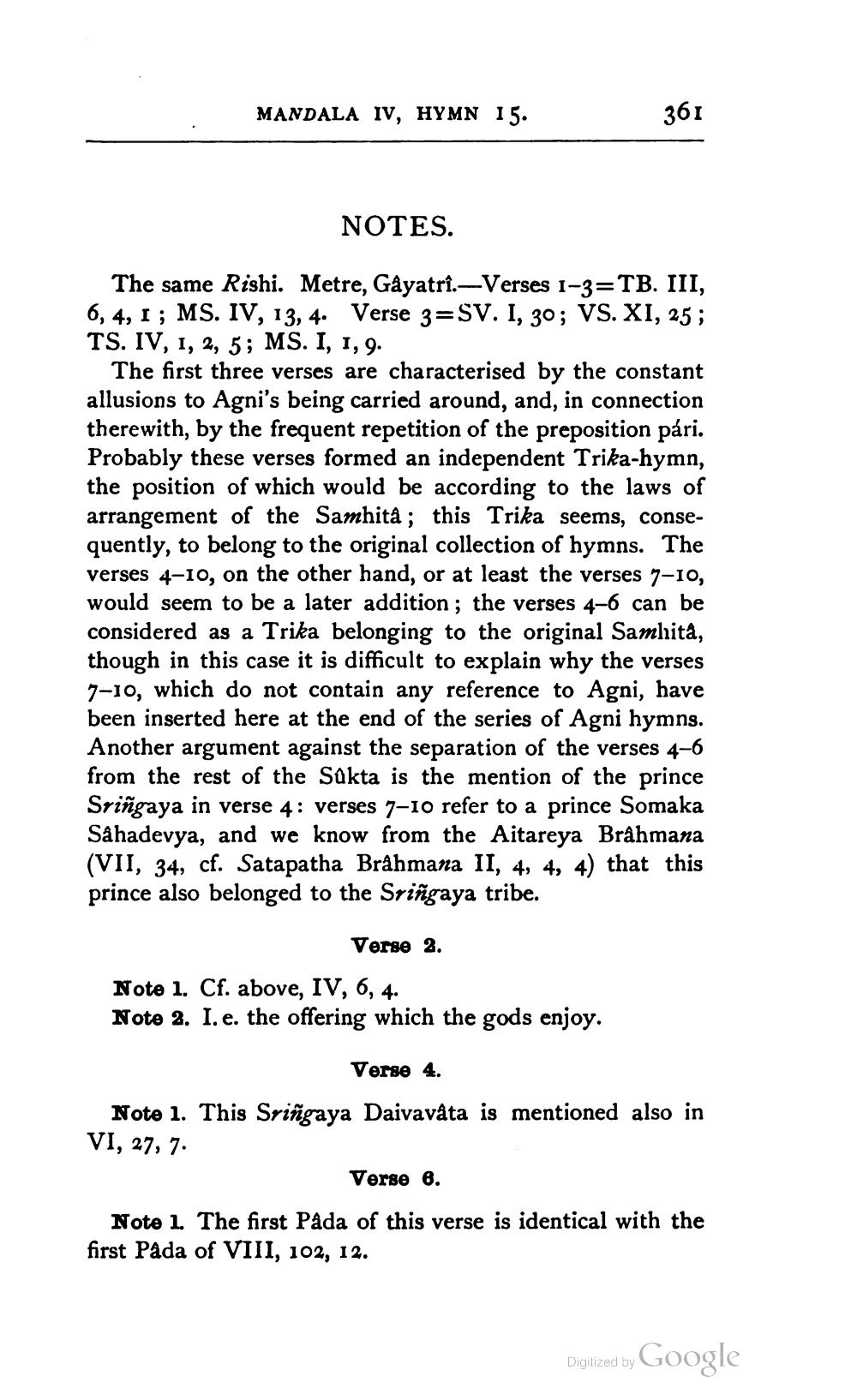________________
MANDALA IV, HYMN 15.
361
NOTES.
The same Rishi. Metre, Gayatri.—Verses 1-3=TB. III, 6, 4, I ; MS. IV, 13, 4. Verse 3=SV. I, 30; VS. XI, 25; TS. IV, 1, 2, 5; MS. I, 1,9.
The first three verses are characterised by the constant allusions to Agni's being carried around, and, in connection therewith, by the frequent repetition of the preposition pári. Probably these verses formed an independent Trika-hymn, the position of which would be according to the laws of arrangement of the Samhità; this Trika seems, consequently, to belong to the original collection of hymns. The verses 4-10, on the other hand, or at least the verses 7-10, would seem to be a later addition; the verses 4-6 can be considered as a Trika belonging to the original Samhita, though in this case it is difficult to explain why the verses 7-10, which do not contain any reference to Agni, have been inserted here at the end of the series of Agni hymns. Another argument against the separation of the verses 4-6 from the rest of the Sukta is the mention of the prince Sriñgaya in verse 4: verses 7–10 refer to a prince Somaka Sahadevya, and we know from the Aitareya Brahmana (VII, 34, cf. Satapatha Brahmana II, 4, 4, 4) that this prince also belonged to the Sriñgaya tribe.
Verse 2.
Note 1. Cf. above, IV, 6, 4. Note 2. I.e. the offering which the gods enjoy.
Verse 4.
Note 1. This Sriñgaya Daivavata is mentioned also in VI, 27, 7.
Verse 6.
Note 1. The first Påda of this verse is identical with the first Pada of VIII, 102, 12.
Digitized by Google




